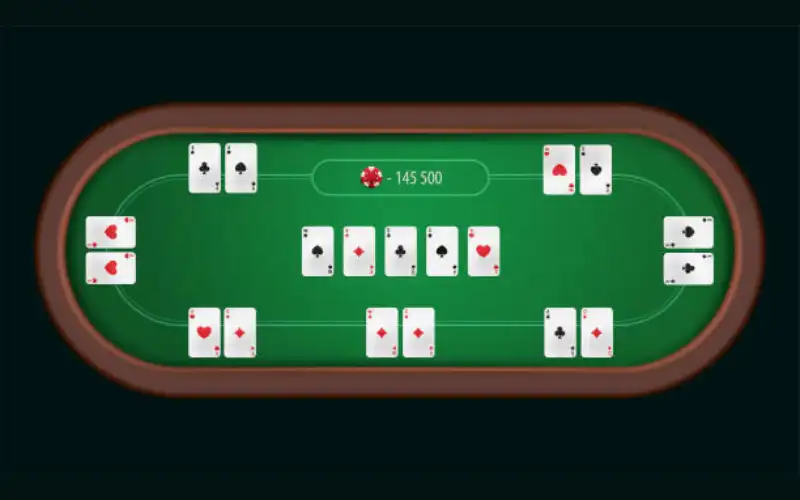Want to win more hands and feel like a pro at the table? Whether you’re new to the game or just looking to level up, understanding Poker Sequences is the ultimate key. These patterns are the secret sauce behind smart moves and epic wins. And if you’re diving into Indian Poker, grasping the right poker rules and hand rankings makes a world of difference.
In this guide, we’re breaking down simple, actionable steps to help you learn Poker Sequences fast — the smart way. No confusing jargon. Just powerful tips for online players who want to dominate the game.
1. Understand What Poker Sequences Actually Are
Before you dive into strategy, you’ve got to know what you’re looking at. Poker Sequences refer to the ranking of hands in a specific order — from high card to royal flush. This is the heart of the game, especially in Poker, where hand recognition is critical for making calls and raises.
Key Sequences in Poker:
- Royal Flush: A, K, Q, J, 10, all the same suit
- Straight Flush: Five cards in a sequence, same suit
- Four of a Kind: Four cards of the same rank
- Full House: Three of a kind with a pair
- Flush: Any five cards of the same suit
- Straight: Five cards in sequence, different suits
- Three of a Kind: Three cards of the same rank
- Two Pair: Two different pairs
- One Pair: Two cards of the same rank
- High Card: No pair, just the highest card
These are universal across most formats, including Poker, and fall under standard poker rules. Memorizing them is the first step to mastering the game.
2. Use Visual Aids to Memorize Poker Sequences
Let’s face it—no one remembers a boring list. But what if you could remember it like a movie scene? Visuals make all the difference. Use card charts, colorful posters, or even poker hand apps that show animated hand rankings. They’re a game-changer for online players looking to step up fast.
Why visuals work:
- Boost memory through color and structure
- Trigger instant hand recognition during games
- Help associate sequence with probability
Many Poker apps come with built-in Poker Sequences charts. Bookmark them. Refer to them often. You’ll absorb the rules like muscle memory, and you’ll be spotting a full house before others realize what hit them.
3. Practice With Flashcards and Mini-Quizzes

Want to test your brain and make it stick? Flashcards and quick quizzes are the fastest way to hammer those Poker Sequences into your head. They’re fun, fast, and perfect for online players in between games.
Pro Tip: Make two sets of flashcards:
- One with hand names (e.g., “Straight Flush”)
- One with visual examples (e.g., 9♦️ 10♦️ J♦️ Q♦️ K♦️)
Then, shuffle and quiz yourself. Match the hand to its rank. Repeat 3–5 times daily.
Mix in Indian Poker trivia and rules to keep things fresh and relevant. You’ll not only remember faster—you’ll react faster during real games too.
4. Join Online Poker Rooms and Observe Hands
Watching real players can teach you what books can’t. Join live tables, especially those focused on Poker, and just observe. Focus on how players react to different Poker Sequences. What do they bet on? When do they fold? Every hand tells a story.
What to watch for:
- Which Poker Sequences are most common?
- How do skilled players build pots?
- What tells or signals give away weak hands?
Observation sharpens your instinct. It shows you how rules apply in live action and how sequence knowledge translates into real wins. Plus, it’s a fun way to learn without pressure.
5. Gamify Your Learning With Poker Apps
Let’s be real—if it’s not fun, you’ll drop it. That’s where poker training apps shine. They turn memorizing Poker Sequences into a game. These apps simulate real-time Poker scenarios and test you on the go.
Popular features to look for:
- Hand ranking challenges
- Real-time feedback on mistakes
- Built-in rules guides
- Leaderboards and trophies
The more you play, the more natural the sequences feel. Before you know it, you’ll be making smart bets based purely on muscle memory.
Conclusion
There’s no secret code—just smart steps. Learning Poker Sequences fast doesn’t mean cramming boring lists. It means making the experience visual, interactive, and fun. From flashcards to poker apps, these steps are tailored for online players who want to play smarter, not harder.
Mastering these sequences will not only give you an edge in Indian Poker but also strengthen your grasp on core poker rules. And trust me, once you know the patterns by heart, every hand feels like a calculated move toward victory. So, what are you waiting for? Shuffle up, study smart, and let the sequences stack the odds in your favor.







